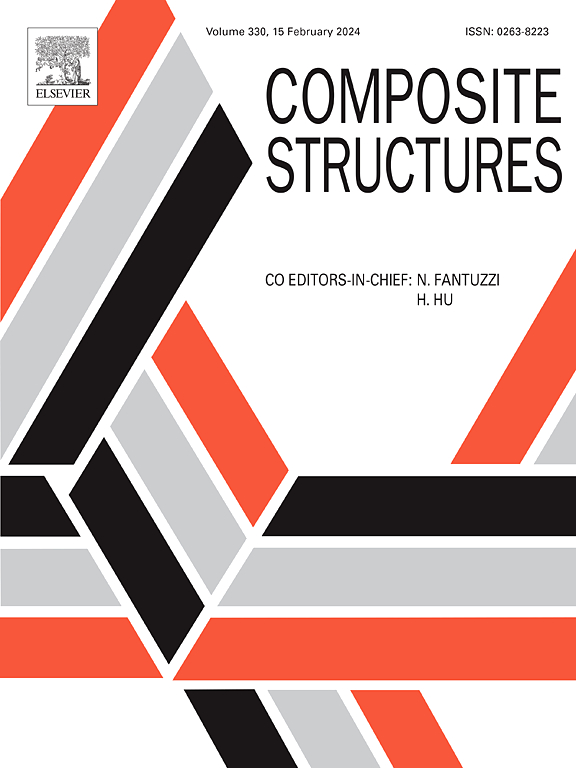Self-supporting robust lattice optimization for material extrusion additive manufacturing
IF 7.1
2区 材料科学
Q1 MATERIALS SCIENCE, COMPOSITES
引用次数: 0
Abstract
A lattice optimization procedure is proposed that enables the fabrication of self-supporting topologies via additive manufacturing, while accounting for uncertainties introduced during additive manufacturing through a two-step optimization process. The first step is lattice layout optimization, which removes the strut members with near-zero diameters from an initial topology generated using a newly introduced lattice cell configuration for the purpose of supporting each strut. A support algorithm is developed that identifies strut joints requiring support in the optimized topology. The struts removed from the topology are selectively reintroduced at joints where support is needed to ensure self-supporting structure fabrication. Unlike existing lattice optimization procedures that typically account for uncertainties related to material properties or loading conditions, the proposed procedure also incorporates uncertainties in design variables, specifically, the diameters of struts, into a robust optimization process in the second step. Robust optimization is performed using neural networks trained to predict the as-fabricated strut diameters and material properties based on deterministic design variables. The applicability of the proposed procedure was demonstrated for the material extrusion technique using benchmark examples. The optimized designs were fabricated and tested to verify the effectiveness of the proposed procedure in producing self-supporting structures with improved prediction accuracy under fabrication-induced uncertainties.
材料挤压增材制造的自支持鲁棒晶格优化
提出了一种通过增材制造制造自支撑拓扑结构的晶格优化过程,同时通过两步优化过程考虑了增材制造过程中引入的不确定性。第一步是点阵布局优化,从使用新引入的点阵单元配置生成的初始拓扑中删除直径接近零的支柱成员,以支持每个支柱。提出了一种支撑算法,在优化后的拓扑结构中识别出需要支撑的支柱节点。从拓扑中移除的支柱有选择地重新引入需要支撑的关节,以确保自支撑结构的制造。与现有的晶格优化程序通常考虑与材料特性或加载条件相关的不确定性不同,该程序还将设计变量的不确定性,特别是支柱的直径,纳入第二步的鲁棒优化过程。利用神经网络进行鲁棒优化,以预测基于确定性设计变量的杆件直径和材料性能。通过实例验证了该方法在材料挤压工艺中的适用性。对优化设计进行了制造和测试,以验证该方法在制造不确定性下生产自支撑结构的有效性,并提高了预测精度。
本文章由计算机程序翻译,如有差异,请以英文原文为准。
求助全文
约1分钟内获得全文
求助全文
来源期刊

Composite Structures
工程技术-材料科学:复合
CiteScore
12.00
自引率
12.70%
发文量
1246
审稿时长
78 days
期刊介绍:
The past few decades have seen outstanding advances in the use of composite materials in structural applications. There can be little doubt that, within engineering circles, composites have revolutionised traditional design concepts and made possible an unparalleled range of new and exciting possibilities as viable materials for construction. Composite Structures, an International Journal, disseminates knowledge between users, manufacturers, designers and researchers involved in structures or structural components manufactured using composite materials.
The journal publishes papers which contribute to knowledge in the use of composite materials in engineering structures. Papers deal with design, research and development studies, experimental investigations, theoretical analysis and fabrication techniques relevant to the application of composites in load-bearing components for assemblies, ranging from individual components such as plates and shells to complete composite structures.
 求助内容:
求助内容: 应助结果提醒方式:
应助结果提醒方式:


